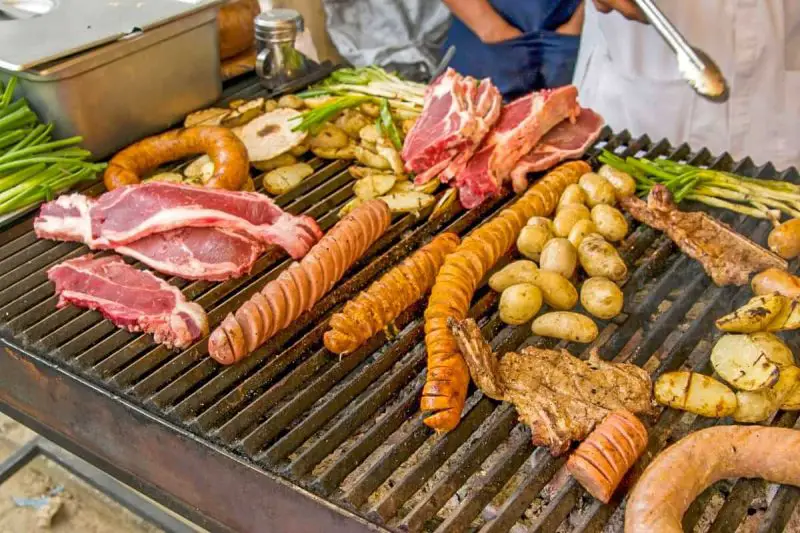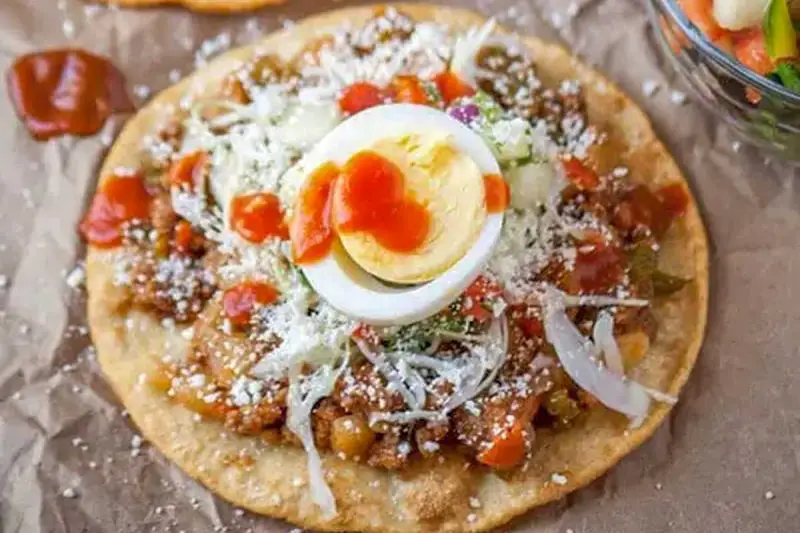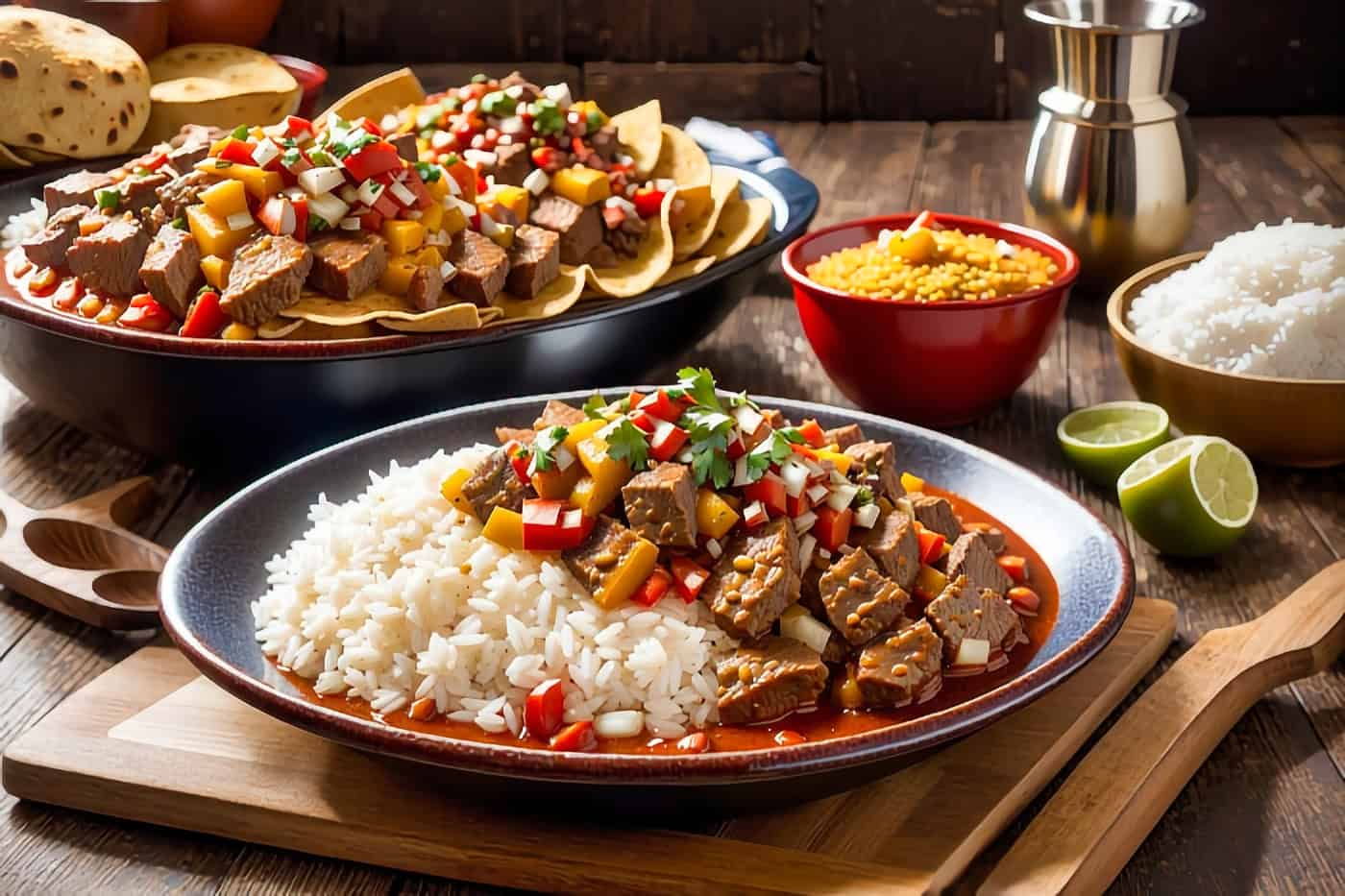
Costa Rican Carne en Salsa recipes typically features meat, such as beef, pork, or chicken, slow-cooked in a savory sauce. The sauce may vary depending on the location or chef’s preference, ranging from tomato-based to creamy, and even spicy. The slow-cooking process ensures that the meat absorbs the flavors of the sauce, resulting in a tender and delicious dish.
An appealing aspect of Costa Rican Carne en Salsa recipes is their adaptability to different side dishes. The dish can be served with rice, potatoes, or fresh vegetables, making it versatile and able to cater to various preferences. This flexibility allows Carne en Salsa to be enjoyed in a multitude of ways, keeping the dining experience fresh and exciting.
Want more ideas to round-out your Costa Rican Recipe Box?
A lot of great options are in these posts!
Additionally, Carne en Salsa is suitable for a wide range of occasions. It can be enjoyed as a satisfying lunch or a hearty dinner, depending on the side dishes chosen. The dish’s savory nature makes it a great option for both casual and formal dining experiences.
Throughout my trip, I sampled Costa Rican Carne en Salsa recipes at various restaurants and eateries. Each establishment had its own unique take on the dish, offering an array of flavors and textures. Some opted for a mild, tomato-based sauce, while others opted for a more robust, creamy sauce with a hint of spice. I appreciated the variety and was intrigued by the diverse ways this dish could be prepared.
You May Want to Join The World Recipes With Our Big Escape
Share your own recipes in our Facebook Group. Find recipes from all over the world. Learn more about International Cuisine and how you can surprise you family with new and exciting foods from all over the world.
For More Photos Visit Our Instagram at World Recipes Daily – Our Big Escape
As I tried different variations of the Costa Rican Carne en Salsa recipe, I noticed that the quality of the ingredients played a significant role in the final outcome. Fresh, high-quality meat and vegetables made a noticeable difference in the overall taste and texture of the dish. When choosing where to sample Carne en Salsa, I found that restaurants that emphasized the use of fresh ingredients delivered the most enjoyable and flavorful meals.
Towards the end of my journey, I became determined to learn how to recreate Carne en Salsa at home. I spent time with local chefs and food enthusiasts, gathering their tips and tricks for perfecting this mouthwatering dish. I was amazed at how open and generous people were with their knowledge, demonstrating the passion and pride they had for Carne en Salsa.
Costa Rican Carne en Salsa recipe has been a delicious exploration of flavors and textures. The dish’s tender meat and rich sauce, paired with its adaptability to various side dishes and occasions, makes it a versatile and tasty meal choice. For those interested in experiencing the culinary delight of Carne en Salsa, I recommend giving this Costa Rican Carne en Salsa recipe a try by recreating it at home.
The Complete Recipe with Ingredients and Step by Step Instructions Listed Below
3 Reasons People Love the Costa Rican Carne en Salsa Recipe
1. Flavorful and Tender Meat: One of the main reasons people love the Costa Rican Carne en Salsa recipe is the deliciously flavorful and tender meat that results from the slow-cooking process. The meat, which can be beef, pork, or chicken, is cooked in a sauce that can vary depending on the chef’s preference or regional variation. Some sauces may be tomato-based, while others are creamier or spicier.
The Costa Rican Carne en Salsa recipe uses slow-cooking method allows the meat to absorb the flavors of the sauce, resulting in a tender and succulent dish. The combination of the savory sauce and the tender meat creates a satisfying and mouthwatering experience that appeals to a wide range of taste preferences. The rich flavors and textures achieved in Carne en Salsa make it a dish that is cherished by many.
Using fresh and high-quality ingredients further enhances the taste of the v. Fresh vegetables and premium cuts of meat can make a noticeable difference in the overall taste and texture of the dish. It is evident that the careful selection of ingredients contributes to the success of Carne en Salsa as a crowd-pleasing meal option.
2. Versatility: Another reason why people love the Carne en Salsa recipe is its versatility. This dish can be easily adapted to suit different tastes and preferences, as the choice of meat and sauce can be varied. Chefs can experiment with different types of meats, sauces, and seasonings to create unique and personalized versions of Carne en Salsa.
Moreover, Costa Rican Carne en Salsa recipes can be enjoyed with various side dishes, making it suitable for a wide range of occasions and meal preferences. It can be served with rice, potatoes, or fresh vegetables, providing a balanced and satisfying meal. This adaptability makes Carne en Salsa a popular choice for both casual and formal dining experiences, as it can cater to different tastes and dietary requirements.
3. Nutritional Value: Last, people love a good Costa Rican Carne en Salsa recipe for its nutritional value and the satiety it provides. The dish contains a good balance of protein, carbohydrates, and vegetables, offering a well-rounded and nourishing meal. The protein content from the meat helps to keep diners full and satisfied, while the carbohydrates from the side dishes, such as rice or potatoes, provide energy to fuel the body.
The inclusion of fresh vegetables in Costa Rican Carne en Salsa recipes not only adds to the dish’s visual appeal but also provides essential vitamins, minerals, and dietary fiber. This nutritional aspect of the dish makes it an attractive meal option for those who seek to maintain a balanced diet while enjoying flavorful and satisfying meals.
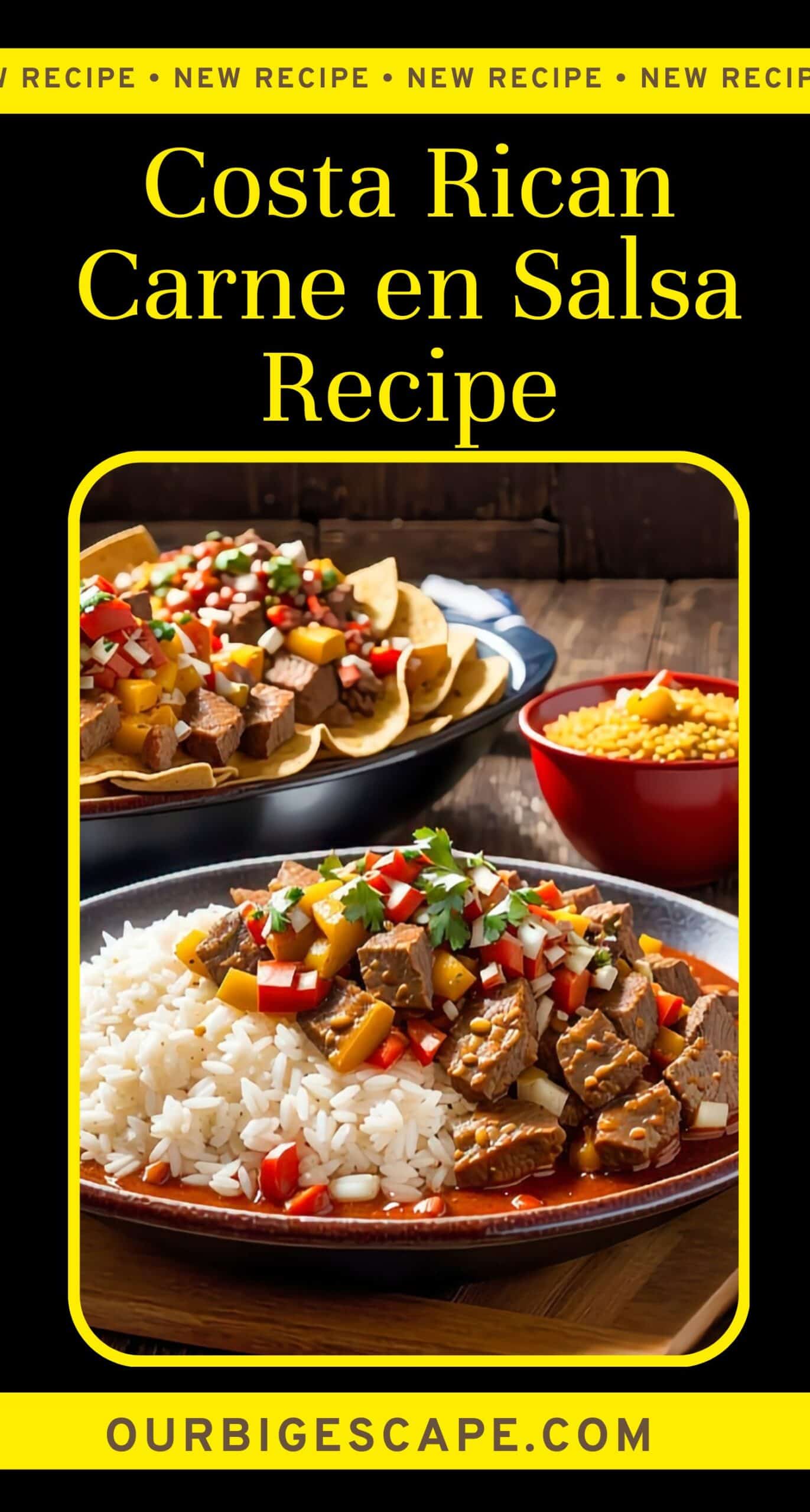
How To Make Our Costa Rican Carne en Salsa Recipe
Ingredients (8 Servings)
2 lbs beef chuck roast, cut into 1-inch cubes
1 large onion, diced
4 cloves garlic, minced
2 red bell peppers, seeded and diced
2 green bell peppers, seeded and diced
1 tsp ground cumin
1 tsp dried oregano
1 tsp paprika
1 tsp chili powder
1 tsp salt
1/2 tsp black pepper
1 tbsp tomato paste
1/2 cup beef broth
1/4 cup white vinegar
1/4 cup chopped fresh cilantro
Instructions
1. Preheat oven to 325°F (165°C).
2. In a large dutch oven or oven-safe pot, heat some oil over medium-high heat.
3. Brown the beef in the pot for 5-7 minutes until browned on all sides.
4. Add the onion and garlic, and sauté for 2-3 minutes until the onion is soft and translucent.
5. Add the diced bell peppers, cumin, oregano, paprika, chili powder, salt, and pepper. Stir well.
6. Stir in the tomato paste, beef broth, and white vinegar. Bring to a simmer.
7. Cover the pot with a tight-fitting lid and transfer it to the preheated oven.
8. Cook for 2 to 2 1/2 hours, or until the beef is tender and the sauce is thick and bubbly.
9. Remove from the oven and let it cool for 5 minutes before serving.
10. Garnish with fresh cilantro.
Nutritional Information For the Costa Rican Carne en Salsa Recipe
Calories: 305
Carbohydrates: 11g
Protein: 32g
Fat: 14g
Saturated Fat: 5g
Cholesterol: 99mg
Sodium: 563mg
Potassium: 733mg
Fiber: 3g
Sugar: 5g
Prep Time : 20 minutes
Cooking Time : 2 hours 30 minutes
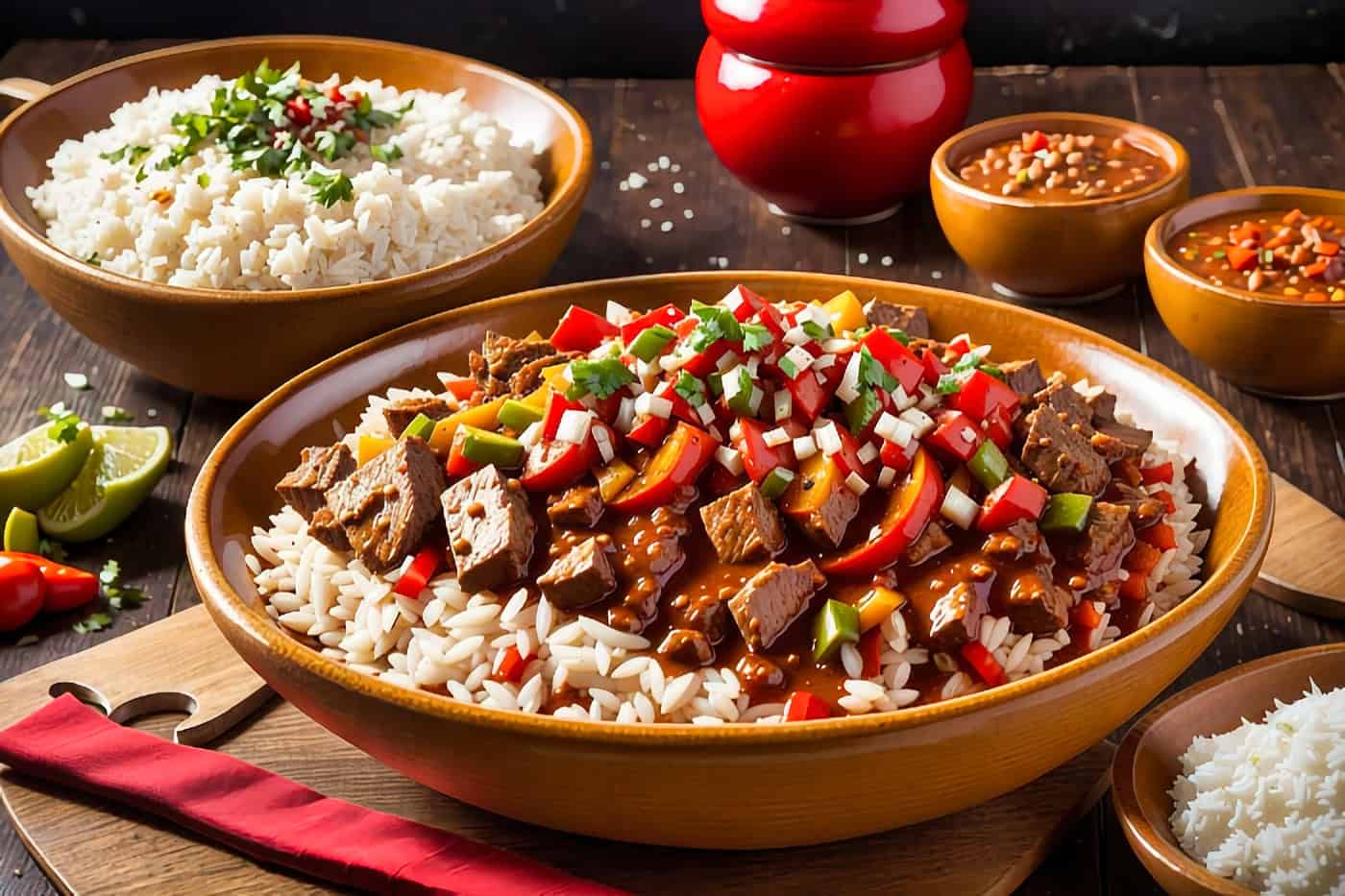
Pots, Pan and Cooking Equipment Needed for the Costa Rican Carne en Salsa Recipe
Mixing bowl
Skillet
Brush or spatula for cooking
Best Way to Store Leftovers From the Costa Rican Carne en Salsa Recipe
Leftover tortillas de queso can be stored in an airtight container in the refrigerator for up to 3 days. To reheat, place in a skillet over medium heat until warmed through.
Substitutions For the Costa Rican Carne en Salsa Recipe
Instead of queso blanco, you can use any mild white cheese such as Monterey Jack or mozzarella.
Vegetable oil can be substituted with any neutral-flavored oil such as canola or grapeseed oil.
Substitutions For the Vegetarian Costa Rican Carne en Salsa Recipe
The Costa Rican Tortillas de Queso Recipe is already vegetarian-friendly.
Tips and Tricks for Easier Creation
Make sure the water you add to the masa harina is warm, not hot or cold.
To shape the tortillas, place a ball of dough between two sheets of plastic wrap or parchment paper and use a tortilla press or a flat-bottomed pan to flatten it.
If you don’t have a tortilla press, you can use a rolling pin to flatten the dough.
Side Dishes and Desserts For the Costa Rican Carne en Salsa Recipe
Refried beans
Guacamole
Pico de gallo
Salsa
Rice and beans
Grilled vegetables
How To Serve the Costa Rican Carne en Salsa Recipe
Serve the Carne en Salsa
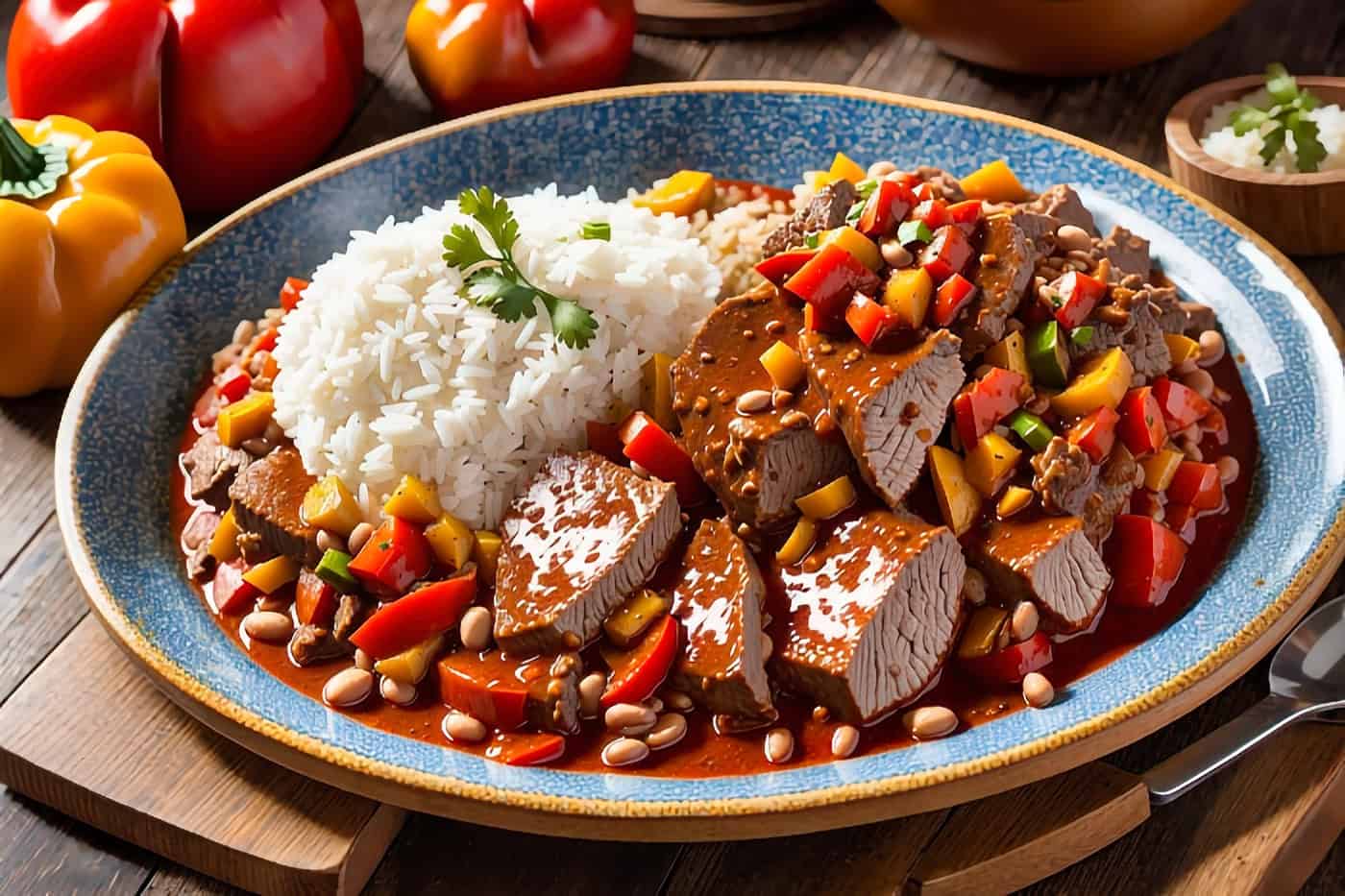
FAQ About the Costa Rican Carne en Salsa Recipe
What is the Costa Rican Tortillas de Queso recipe?
The Costa Rican Tortillas de Queso Recipe is a traditional Costa Rican dish made from masa harina (corn flour), grated queso blanco (white cheese), warm water, salt, and vegetable oil. The dough is shaped into tortillas and cooked until crispy.
How do I make Costa Rican Tortillas de Queso recipe?
To make Costa Rican Tortillas de Queso Recipe, you will need to mix masa harina, grated queso blanco, salt, and warm water to form a dough. Divide the dough into 8 portions, shape each portion into a tortilla, and cook them in a skillet until lightly browned and crispy.
What type of cheese is used in Costa Rican Tortillas de Queso recipe?
The traditional cheese used in Costa Rican Tortillas de Queso Recipe is queso blanco, a mild white cheese that is popular in Central and South America. However, you can use any mild white cheese such as Monterey Jack or mozzarella as a substitute.
Can I make Costa Rican Tortillas de Queso recipe ahead of time?
Yes, you can make Costa Rican Tortillas de Queso Recipe ahead of time and store them in an airtight container in the refrigerator for up to 3 days. To reheat, place them in a skillet over medium heat until warmed through.
What can I serve with Costa Rican Tortillas de Queso recipe?
Costa Rican Tortillas de Queso Recipe can be served as a snack or appetizer, or as a side dish to accompany a main course. They can be topped with your favorite salsa or dip, or served alongside refried beans, guacamole, pico de gallo, or grilled vegetables.
Final Thoughts
In conclusion, my encounters with the Costa Rican Carne en Salsa recipes has left a significant impression on me as a food enthusiast. This incredible dish offers a flavorful and tender meat experience that is hard to forget. Its versatility, allowing for various adaptations and side dishes, makes it a go-to meal for different occasions and preferences. Additionally, the nutritional value and satiety it provides make it an attractive option for those who seek well-rounded and nourishing meals.
My exploration of Carne en Salsa has opened up new possibilities in the world of cuisine for me. Discovering the different combinations of meat, sauces, and side dishes has been a rewarding adventure. Each variation of Carne en Salsa has its own unique charm, making it an exciting dish to try and experiment with at home or in restaurants.
I am eager to share my newfound love for these Costa Rican Carne en Salsa recipe with friends and family. Its delicious flavors, versatility, and nutritional benefits make it a dish that is sure to please a wide variety of palates. I look forward to recreate a Costa Rican Carne en Salsa recipe with the instructions in our recipe.
Costa Rican Carne en Salsa
Equipment
- Mixing bowl
- skillet
- Brush or spatula for cooking
Ingredients
- 2 lbs beef chuck roast cut into 1-inch cubes
- 1 large onion diced
- 4 cloves garlic minced
- 2 red bell peppers seeded and diced
- 2 green bell peppers seeded and diced
- 1 tsp ground cumin
- 1 tsp dried oregano
- 1 tsp paprika
- 1 tsp chili powder
- 1 tsp salt
- 1/2 tsp black pepper
- 1 tbsp tomato paste
- 1/2 cup beef broth
- 1/4 cup white vinegar
- 1/4 cup chopped fresh cilantro
Instructions
- Preheat oven to 325°F (165°C).
- In a large dutch oven or oven-safe pot, heat some oil over medium-high heat.
- Brown the beef in the pot for 5-7 minutes until browned on all sides.
- Add the onion and garlic, and sauté for 2-3 minutes until the onion is soft and translucent.
- Add the diced bell peppers, cumin, oregano, paprika, chili powder, salt, and pepper. Stir well.
- Stir in the tomato paste, beef broth, and white vinegar. Bring to a simmer.
- Cover the pot with a tight-fitting lid and transfer it to the preheated oven.
- Cook for 2 to 2 1/2 hours, or until the beef is tender and the sauce is thick and bubbly.
- Remove from the oven and let it cool for 5 minutes before serving.
- Garnish with fresh cilantro.
